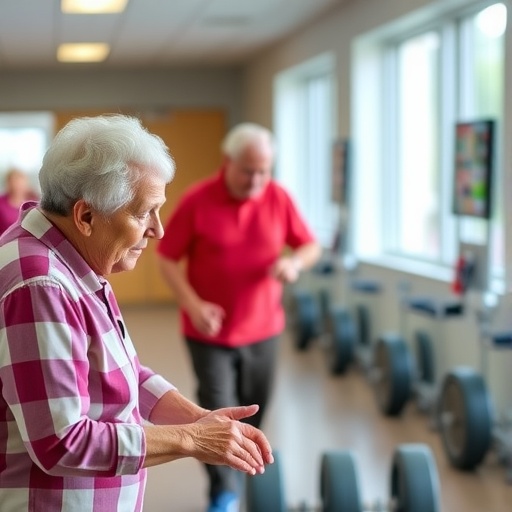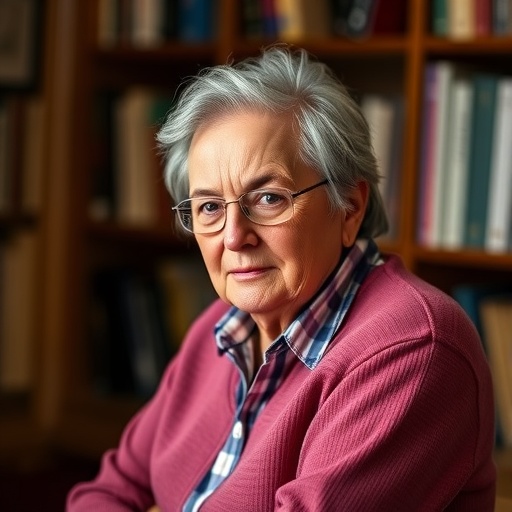During hospitalization, maintaining a level of physical activity is vital for the recovery and overall health of older adults. A recent qualitative study sheds light on the perceptions and experiences of older patients regarding physical activity while they are hospitalized. This research, conducted by a team led by Dalin Eriksson, explores the nuanced views of older adults who are often constrained by various factors during hospitalization yet maintain a desire to stay active. This study highlights the importance of understanding these perspectives for healthcare providers and caregivers aiming to foster a more conducive environment for rehabilitation and recovery.
Older adults frequently find themselves in hospital settings for various medical conditions, and as such, their mobility may be severely restricted. This limitation can have profound implications on their physical and mental well-being. Despite these constraints, many older patients express a strong desire to engage in physical activity, emphasizing its critical role in their overall recovery process. The study unveiled that patients often perceive physical activity not merely as an exercise regimen, but rather as a crucial component of their identity and autonomy during a vulnerable time in their lives.
Throughout the interviews conducted for the study, several themes emerged that characterize the experiences of older adults regarding physical activity in hospitals. The participants articulated a deep understanding of the physical benefits associated with regular activity, including improved mobility, strength, and a reduction in the likelihood of complications arising from prolonged bed rest. However, they also noted that emotional and psychological benefits played a significant role in their motivation. The act of moving or engaging in physical activities helped to maintain a semblance of control and independence, fostering a sense of normalcy amidst the chaos of hospitalization.
Legal and structural barriers often hinder patients’ ability to engage in physical activity during their hospital stay. Many older adults reported that hospital routines and policies sometimes impede their movements and restrict access to spaces suitable for physical activities. This phenomenon raises critical questions regarding the rigidity of hospital protocols and the potential for these structures to be adapted to better accommodate the needs of elderly patients. The study advocates for a reassessment of hospital policies that often prioritize bed rest over encouraging mobility, suggesting that a paradigm shift could enhance recovery outcomes.
Furthermore, the personal experiences shared by interviewees revealed the importance of social support in promoting physical activity during hospitalization. Participants noted that encouragement from healthcare staff, family members, and peers significantly influenced their willingness to engage in movement. They expressed feeling more empowered and motivated to utilize available resources when they received positive reinforcement and tangible assistance from healthcare professionals. This underscores the need for healthcare providers to adopt a more supportive and proactive approach to engage older adults in physical activities.
The research also touches upon the role of therapeutic environments in facilitating physical activity. For many older patients, being in a space designed to foster movement—whether through physical therapy, access to outdoor areas, or simply having more room to navigate—was associated with increased participation in physical activity. Hospitals often lack suitable environments tailored for elderly patients’ rehabilitation activities. Consequently, reimagining hospital spaces to encourage movement and activity can play an essential role in improving the overall experience of older patients.
Interestingly, the study also discovered that technology could serve as a useful tool in promoting physical activity among hospitalized older adults. For instance, wearables and mobile health applications tailored for older populations can track movement, set goals, and provide reminders and motivation for activities. Such technological innovations can not only enhance patients’ engagement in physical activity but also provide healthcare providers with valuable real-time data to monitor their patients’ activity levels. Preventing complications associated with immobility might be more feasible through integrating these tech-based solutions into patient care plans.
Despite these findings, it is essential to acknowledge the challenges and limitations that older adults face in maintaining physical activity while in a hospital setting. Some study participants reported experiencing physical pain or discomfort, which significantly affected their ability to engage in movement. Additionally, cognitive decline or confusion related to their medical condition can further complicate their capacity to participate in physical activities. Healthcare professionals must carefully consider these factors and tailor interventions to ensure that patients’ physical activity levels are enhanced without exacerbating any existing health issues.
Moreover, the research emphasizes the importance of personalized care plans that take into account individual patient preferences and limitations. Each patient’s unique medical history and personal goals for physical activity must inform their rehabilitation process. Engaging patients in discussions about their desires for physical movement can facilitate a more holistic approach to recovery in which their voices and experiences are acknowledged and valued.
The insights garnered from this qualitative study not only emphasize the necessity for increased attention towards physical activity in elderly patients during hospitalization but also hint at a potential shift in practice standards. By bridging the gap between research findings and clinical practices, healthcare professionals can develop targeted strategies to help patients feel empowered and supported during their recovery journeys. Recognizing and responding to the voices of older patients is indispensable in fostering an environment where physical activity is not just encouraged but becomes an integral part of their hospitalization experience.
As healthcare systems continue to evolve, the findings of this study could serve as a cornerstone for future research and practice. By further exploring the intersection between physical activity and elderly patient care within hospital environments, researchers and clinicians can develop innovative solutions to improve functional outcomes for older adults. Ultimately, enhancing the physical activity experience for hospitalized older adults could significantly impact their recovery trajectories, bringing forth improved health outcomes, higher satisfaction with care, and enhanced quality of life.
In conclusion, the qualitative interview study conducted by Dalin Eriksson and colleagues offers crucial insights into older adults’ perspectives on physical activity during hospitalization. By highlighting the importance of understanding patients’ desires for movement, the role of environmental factors, and the potential impact of supportive healthcare providers, this research paves the way for transformative changes in hospital practices. Empowering older adults to maintain an active life during vulnerable times is not merely a luxury; it is an essential aspect of promoting health, dignity, and well-being in a population that often faces institutional challenges. As we move forward, fostering an inclusive, encouraging, and dynamic hospital culture that prioritizes physical activity could significantly revolutionize the comprehensive care we offer to the elderly.
Subject of Research: Older adults’ perspectives on physical activity during hospitalization.
Article Title: Older adults’ perspectives on physical activity during hospitalization: a qualitative interview study.
Article References: Dalin Eriksson, K., Welmer, AK., Sandberg, L. et al. Older adults’ perspectives on physical activity during hospitalization: a qualitative interview study. BMC Geriatr 25, 688 (2025). https://doi.org/10.1186/s12877-025-06292-y
Image Credits: AI Generated.
DOI: 10.1186/s12877-025-06292-y
Keywords: Physical activity, older adults, hospitalization, qualitative study, healthcare practices.
Tags: autonomy and identity in older adultsconstraints on elderly mobility during hospitalizationfostering rehabilitation in hospital settingshealthcare provider strategies for patient engagementhospital exercise for older adultsimportance of exercise in recoverymental well-being and physical activitymobility limitations for elderly patientspatient experiences with hospital exerciseperceptions of physical activity in hospitalizationpromoting active lifestyles in healthcarequalitative study on older patients





